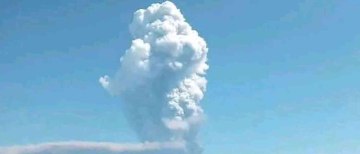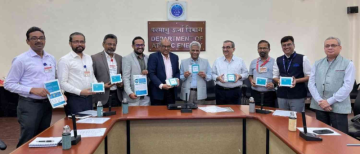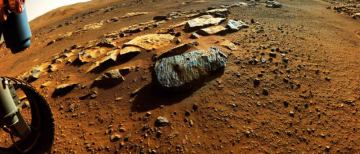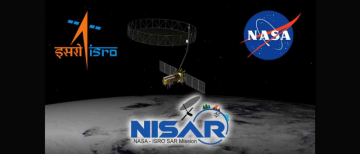ALSO READ:ISRO marks 100th mission: GSLV-F15 Successfully Launches NVS-02 from Sriharikota
Asteroid 2024 YR4: A Possible Encounter in 2032 In the vast universe, asteroids frequently traverse near Earth, with some presenting negligible danger while others require closer scrutiny due to their potential hazards. One such asteroid, 2024 YR4, has recently attracted considerable attention from researchers and space organizations globally. It was identified on December 27, 2024, by the Asteroid Terrestrial-impact Last Alert System (ATLAS) at the Rio Hurtado Observatory in Chile. This near-Earth object is expected to make its closest approach to our planet in December 2032. Although the likelihood of a collision remains minimal, continuous observation and analysis are essential for comprehending its trajectory and any possible implications.
Key Factors about Asteroid
Key Information Regarding Asteroid 2024 YR4 Dimensions and Classification: Asteroid 2024 YR4 is estimated to have a diameter ranging from 40 to 100 meters (approximately 130 to 300 feet). This size is similar to well-known landmarks such as the Statue of Liberty. It is categorized as an Apollo-type asteroid, which means its orbit intersects with that of Earth, classifying it as a near-Earth object of significance. Projected Close Approach: The asteroid is anticipated to come closest to Earth on December 22, 2032.
As of early February 2025, current calculations suggest a 1-in-43 (around 2.3%) likelihood of impact on that date. Torino Scale Assessment: The Torino Scale is utilized to evaluate the potential risk associated with near-Earth objects. Presently, 2024 YR4 is assigned a rating of 3, indicating a notable risk that necessitates ongoing observation but does not call for immediate intervention.
Surveillance and Risk Evaluation
NASA and the European Space Agency (ESA) are diligently tracking asteroid 2024 YR4 with the aid of sophisticated telescopes and observational methods. The asteroid is currently listed among the top threats on NASA's Sentry Risk List due to its heightened probability of impact. Despite the increasing concerns regarding its path, experts stress that there remains a 97.7% likelihood that it will not collide with Earth. David Rankin, an asteroid researcher engaged in monitoring these celestial bodies, points out that initial impact probability estimates can evolve as additional data is collected. "The rising probability reflects our ongoing efforts to refine our understanding of the asteroid's trajectory," he states. As scientists continue to gather data, they can adjust forecasts and potentially reduce the perceived risk of impact.
The Importance of Global Preparedness
The possible repercussions of an asteroid impact, such as that posed by 2024 YR4, underscore the necessity for global readiness in planetary defense initiatives. Although the likelihood of such an event is minimal, the potential consequences of a collision could be considerable, especially in areas with high population density. Experts caution that while this asteroid is not anticipated to result in an extinction-level catastrophe, it could inflict significant regional harm if it were to collide with Earth.
Effective planetary defense strategies rely heavily on international collaboration. Currently, two UN-sanctioned international asteroid response teams are assessing various approaches to address potential impacts. These teams stress the importance of global cooperation in monitoring near-Earth objects and preparing for any possible scenarios.
What Is To Be Expected Further
As additional observations are gathered over time, researchers will persist in enhancing their assessments of asteroid 2024 YR4's trajectory and the associated impact risk. The James Webb Space Telescope is set to conduct observations of the asteroid in March and May 2025, offering critical data for analyzing its course.
NASA's automated Sentry system will monitor updates on the asteroid's condition, guaranteeing that information is readily available to both the scientific community and the general public. With the progression of our observational technologies, we may identify even more asteroids that could present future risks.
A Call for Vigilance
Asteroid 2024 YR4 highlights our position in the cosmos and underscores the necessity of vigilance in planetary defense. Although current evaluations suggest a minimal risk of collision, it is essential to persist in monitoring these near-Earth objects to stay informed.
The scientific community strongly supports international collaboration in planetary defense initiatives, ensuring that humanity is ready to face any potential dangers from outer space.
In a time when technology allows us to track these celestial entities with unprecedented accuracy, we must adopt a proactive stance in comprehending and addressing the risks posed by asteroids like 2024 YR4. By working together and advancing our research, we can bolster our readiness against cosmic threats while cultivating a greater appreciation for the marvels of our universe.
With inputs from agencies
Image Source: Multiple agencies
*The views expressed are personal to the author and do not reflect the platform's opinion of the same.
© Copyright 2024. All Rights Reserved Powered by Vygr Media.
Author's profile:
Arhan Ali is a sharp observer of economic and political currents, known for blending keen analysis with a dash of wit. Whether dissecting global trade wars or taking a playful jab at social absurdities, his writing strikes the perfect balance between intellect and irreverence.
























